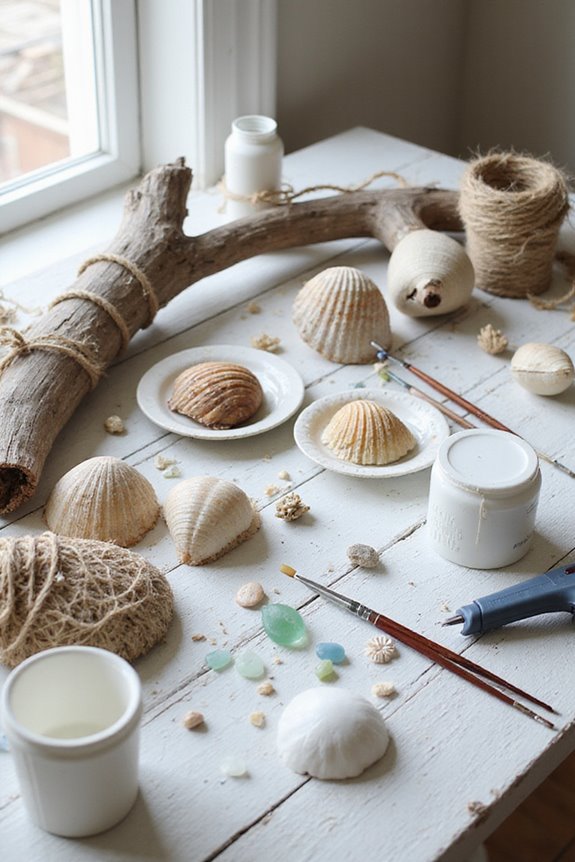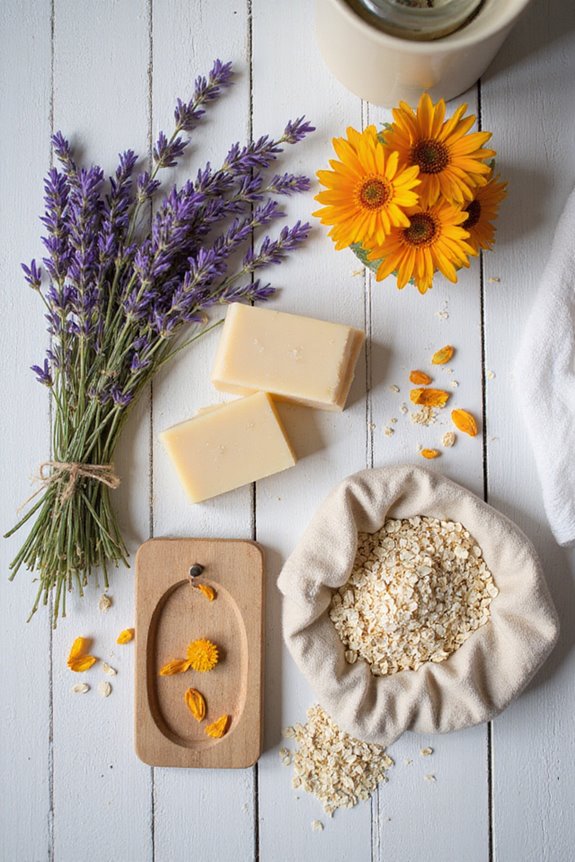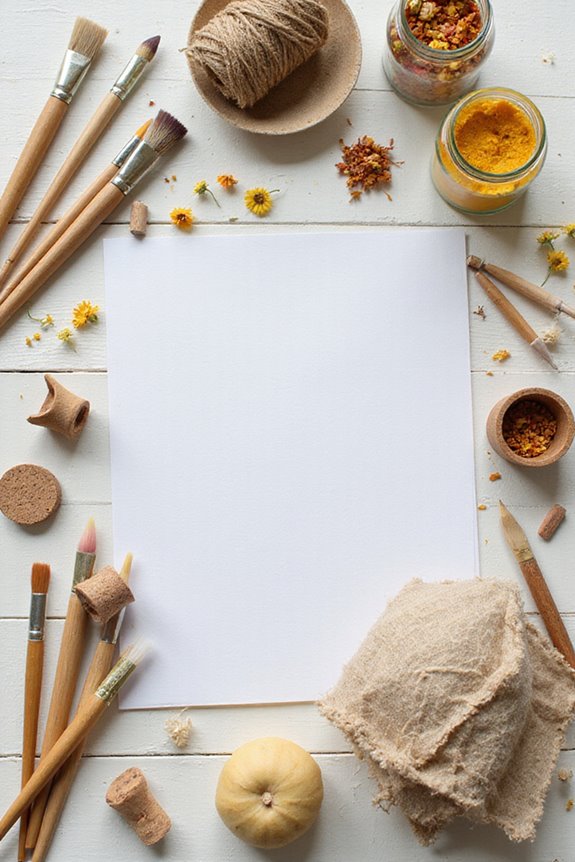Creating natural beeswax candles is easy and fun! First, we’ll gather materials: beeswax, cotton wicks, and amber glass jars. Then, we’ll melt the beeswax in a double boiler at 145°F to 160°F. Once melted, we can pour it into our jars. Before that, let’s dip the wick base in wax for adhesion. If you want scent, add essential oils at 170°F. After pouring, let them cure for 24-48 hours for the best burn. There’s so much more to explore!
Key Takeaways
- Source high-quality beeswax from local beekeepers or trusted online suppliers, available in blocks, beads, or sheets.
- Use a double boiler to melt beeswax gently at 145°F to 160°F, filtering through a fine mesh strainer for purity.
- Center the wick in the container by dipping the base in melted wax and using wick holders for stability during pouring.
- Add compatible essential oils like lavender just before pouring at 170-180°F to achieve a pleasant scent throughout the candle.
- Pour melted wax at 155°F to 160°F, allowing candles to cure for 24 to 48 hours for optimal burn quality and stabilization.
Materials and Equipment Needed
Creating beautiful beeswax candles starts with understanding the materials and equipment we need. 🐝 First up, we’ll focus on the main ingredients: beeswax. We recommend sourcing beeswax from local beekeepers or reputable online suppliers for quality and purity. It typically comes in blocks, beads, or sheets, depending on our preferred candle style.
Now, let’s talk about choosing wicks. Cotton or wooden wicks work best for beeswax, ensuring a clean burn. Remember to trim the wick to about 1-2 inches longer than the container height before pouring. Proper wick positioning is essential for an even burn, so using wick holders can help keep it centered. Additionally, using amber glass jars can enhance the aesthetic appeal and preserve the quality of your candles.
Melting and Filtering Beeswax
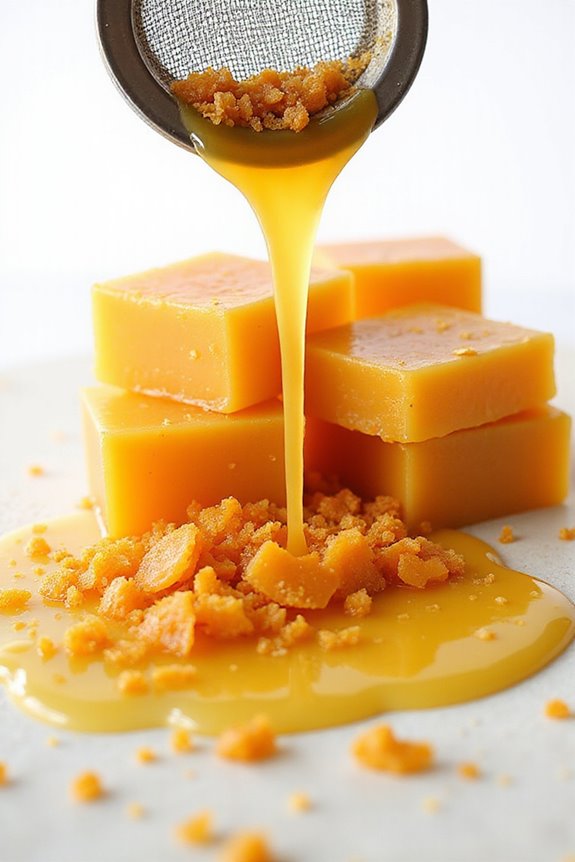
When we’re ready to melt and filter our beeswax, it’s important to use the right methods to guarantee the best results. 🌟 We can start with a double boiler to maintain gentle heat and keep our wax temperatures between 145°F and 160°F. This prevents overheating, which can burn the wax and ruin its scent.
Once melted, we should pour the wax through a fine mesh strainer or cheesecloth to filter out impurities like debris or dirt. 🐝 It’s best to do this while the wax is still warm for easy flow. Remember, if we want even more purity, we can melt and filter our wax multiple times. Additionally, ensuring that our wax is acid-free is essential for maintaining the quality of our candles. Let’s keep our candle-making process smooth and enjoyable!
Wick Placement and Centering Techniques
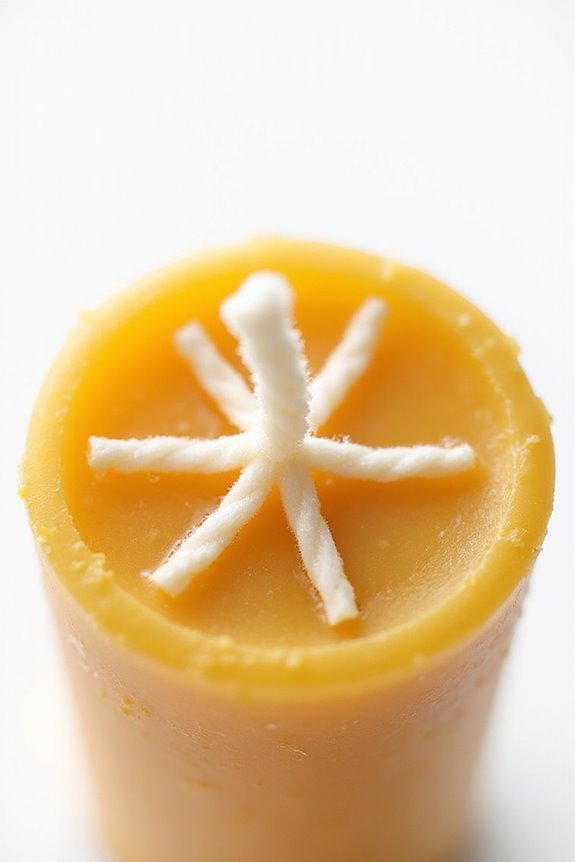
Wick placement is essential for crafting beautiful beeswax candles that burn evenly and safely. To begin, dip the wick’s base in melted beeswax, helping it stick to the bottom of your mold or container. Next, position the wick right at the center to guarantee symmetrical burning. We should also visually check that it’s not too close to the edges, as this can cause uneven melting 🌊.
For wick stability, consider using wick holders or small sticks across the container’s top to keep it upright while the wax hardens. Remember, cut the wick height so it just reaches the top of the container, assuring a perfect candle finish. This preparation reduces the risk of losing wick placement during pouring 😊. Additionally, using a candle wick centering device can significantly enhance your ability to maintain the wick’s position during the cooling process.
Adding Fragrances for Scent
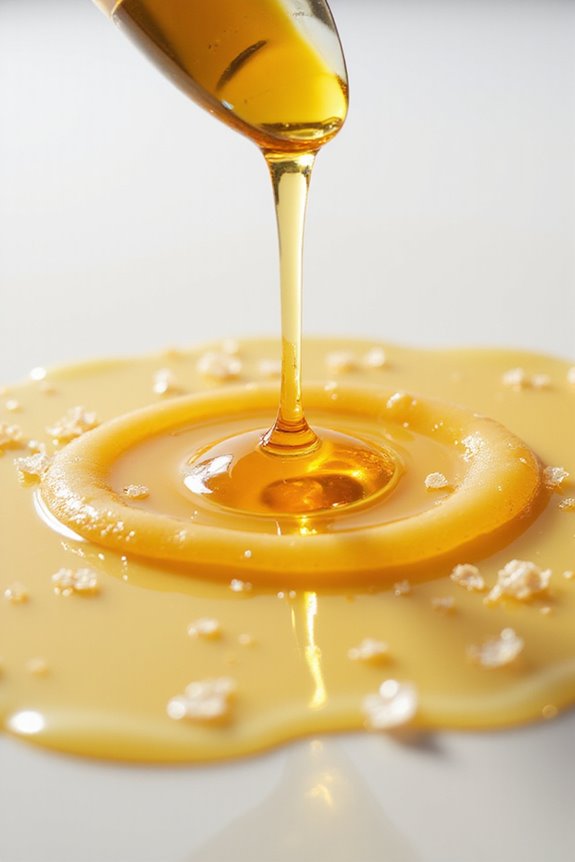
Now that we’ve got the wick all set and centered, it’s time to bring some delightful scents to our beeswax candles. 🎉 When selecting fragrances, we’ll consider scent compatibility with beeswax’s natural honey aroma. We can use essential oils like lavender or chamomile, which not only smell great but also offer therapeutic benefits.
Here’s what to keep in mind:
- Add fragrance oils just before pouring, maintaining a temperature of 170-180°F (77-82°C) for ideal absorption. 🌡
- Stir them thoroughly to distribute the scent evenly.
- Remember, stronger scents can enhance the overall aroma without overpowering the beeswax. Additionally, consider using highly concentrated oils to ensure a lasting scent throw in your candles.
Pouring, Setting, and Curing Your Candles
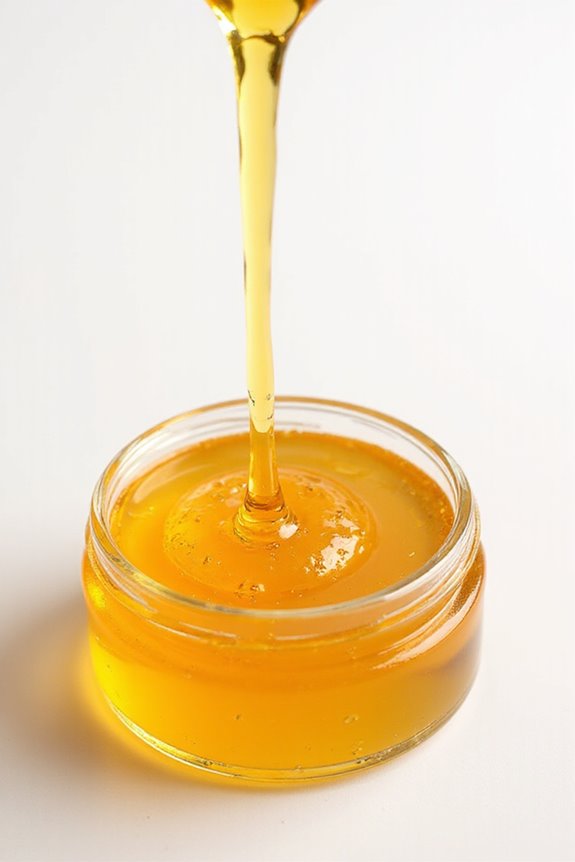
Pouring, setting, and curing our beeswax candles is an essential part of the candle-making process. 🕯 To achieve beautiful results, we need to pay attention to a few key techniques.
- Pouring Techniques: Pour wax slowly and consistently down the center of the mold at 155°F to 160°F. Overfill slightly to allow topping off. Avoid adding wax if gaps form.
- Cooling Process: Let candles cool completely in a warm environment, like a turned-off oven at 170°F. This prevents cracks.
- Curing: Allow candles to cure for 24 to 48 hours before lighting. This helps with wick stabilization and burn quality, ensuring a better overall candle burn quality.
Frequently Asked Questions
How Long Do Beeswax Candles Typically Last When Burned?
We’ve wondered about burn time ourselves! Typically, beeswax candles last longer due to their wax quality. Depending on size and shape, they can last anywhere from several hours to over a hundred—each burn revealing their magic!
Can I Reuse Old Candle Containers for New Beeswax Candles?
Absolutely, we can reuse various candle container types for new beeswax candles! By using effective cleaning methods, we guarantee our containers are ready and safe, allowing for creative, eco-friendly projects while reducing waste.
Is It Safe to Leave Beeswax Candles Burning Overnight?
Leaving beeswax candles burning overnight isn’t safe. We should always prioritize candle safety; unattended flames can lead to accidents. It’s best to extinguish them before sleeping to guarantee we all stay safe and sound.
What Should I Do if My Candle Wick Burns Too Quickly?
We’ve all watched a candle flame race like a runaway train. If your wick’s burning too quickly, let’s trim it down and check the wick materials. A little adjustment goes a long way in achieving perfection.
Can I Mix Different Types of Waxes for Candle Making?
Yes, we can mix different waxes! Using effective wax blending techniques helps minimize wax compatibility issues, allowing us to enjoy improved texture, scent throw, and burn time. Experimenting can lead to unique candle creations we love!



